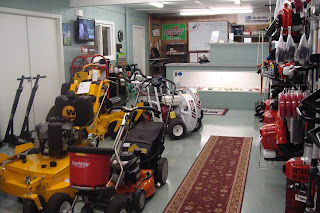Mowing Tips For A Great-Looking Lawn
The grass can be greener on your side of the fence if you heed these eight hints on making the most of mowing.
1. Choose the Correct Cutting Height:
This depends on the type of grass, the amount of rainfall, prevailing temperature and the lawn’s overall condition.
2. Don’t Cut Your Grass Too Short:
Mowing too short can result in weak, thin grass that’s easily damaged by drought and pests. Leaving your grass a bit longer reduces heat buildup and preserves needed moisture. A good rule of thumb is the one-third rule—cut no more than a third of the grass height and never more than an inch at a time.
3. Mow With Sharp Blades:
Sharp blade’s cut grass cleanly and efficiently; dull blades tear at the grass, harming it. We Sharpen Blades here at Imperial Services.
4. Mow When the Grass Is Cool and Dry:
Late afternoon or early evening often provides ideal mowing conditions. Don’t mow after rain or even heavy dew and never mulch when the grass is wet. Moist grass can clump beneath the mower deck.
5. Water Your Lawn Regularly:
Try to imitate a slow, soaking rain by applying about an inch of water per week. Consider placing tin cans around your lawn, so you can check to be sure you are giving it the proper amount of water.
6. Use the Right Amount of Fertilizer:
A slow-release fertilizer provides missing nutrients for slow, even growth. When to fertilize and how much to use depends on the condition of your lawn and soil.
7. Aerate in the Spring:
Using an aerator to remove cores of soil from the lawn increases clipping decomposition speed and encourages deeper root growth by opening up the soil and permitting greater movement of water, fertilizer and air.
Here at Imperial Services we have an Aerator that you can rent, by the hour, day or week. Just give us a call @ 978-67-6016.
8. Select the Right Mower:
The right mower for your lawn depends on the size of the property, whether there are hills and whether you want it to help with other chores, such as pulling a cart for yard work. Once you have your answer, you can decide among a walk-behind mower, a rider tractor or a zero-turn machine. Get advice from the experts on lawn care at Imperial Services Inc.


